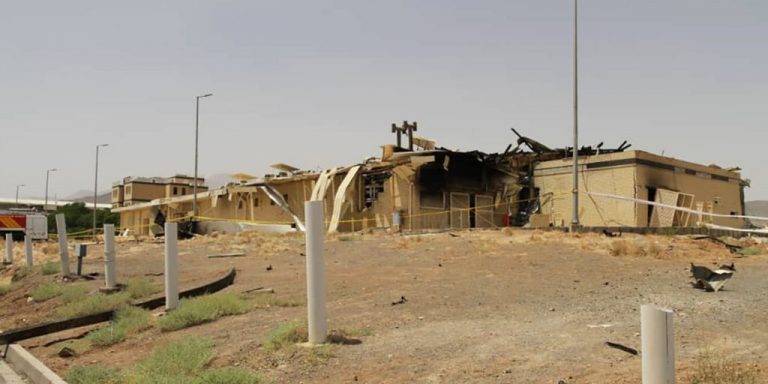INTELBRIEF
July 13, 2020
IntelBrief: Mysterious Explosions Continue to Rock Iran

- The July 2 explosion at a key Iranian nuclear facility was likely an attack organized by an external actor.
- The erosion of the 2015 multilateral Iran nuclear agreement has renewed international concerns about Iran’s nuclear program.
- The United States and regional powers will increasingly rely on direct action to constrain Iranian nuclear capabilities.
- Military or other direct action against Iran’s facilities will have only fleeting effect, as compared to the effects of a lasting Iran nuclear agreement.
A number of unexplained explosions have taken place in Iran in June and July 2020. Most notable among them was a June 25 explosion at a facility in the town of Khojir, east of Tehran, most closely associated with Iran’s ballistic missile program. Another was a July 2 explosion at Iran’s main uranium enrichment facility at Natanz, in central Iran. Other explosions and power failures have happened over the course of the past two months, although it remains unclear whether these events were deliberate or connected to each other. Whereas the facility that was damaged at Khojir - reportedly involved in missile fuel production - is likely of marginal significance, the Natanz facility has a direct connection to the threat posed by Iran’s nuclear program.
The building at Natanz, which commercial satellite photographs show was largely destroyed, is widely reported to be a site for the production of advanced centrifuges – equipment that is used to enrich uranium. The 2015 nuclear agreement allows Iran to research and develop, but not install, new centrifuges that can enrich many times faster than those that Iran is allowed to operate. Since mid-2019, as a response to the Trump administration’s 2018 withdrawal from the deal and its reimposition of all sanctions, Iran has reduced its compliance with the nuclear restrictions of the accord. Were Iran to begin installing and using the advanced centrifuges it was manufacturing at the Natanz facility, its ‘breakout time’ - the time needed to make enough fissile material for one nuclear weapon – would shrink to levels that the United States and its partners consider a critical threat.
As the ability of the 2015 nuclear agreement to constrain Iran’s nuclear program diminishes, the United States and its regional partners, particularly Israel, have considered direct action potentially necessary to constrain Iran’s nuclear program. The Natanz facility that produces advanced centrifuges presented a ripe target for any outside actor that seeks to set back Iran’s program. Although there is no direct evidence, there is broad consensus that the July 2 Natanz explosion was caused by a deliberate attack. And a July 6 report in the Washington Post, quoting a ‘Middle East security official,’ said that an explosive device was planted at the facility to ‘send a signal’ to Tehran. Israel’s Defense Minister Benny Gantz said his country was not ‘necessarily’ behind every explosion in Iran, a formulation that seemed to confirm that the explosion was an Israeli operation. There were no reports of combat aircraft or missile activity in Iran at the time of the explosion, suggesting that Israel might have used agents inside Iran to strike the facility. Israel demonstrated in 2018 that it could take action inside Iran by spiriting out of a Tehran warehouse a trove of documents about Iran’s earlier efforts to develop a nuclear explosive device. In 2010, the United States and Israel jointly developed and employed the ‘Stuxnet’ computer worm to destroy about 1,000 of Iran’s 5,000 centrifuges that were operating at Natanz at that time. Both Israel and/or the United States are increasingly likely to act directly against Iran’s nuclear infrastructure as the 2015 nuclear agreement proves unable to constrain Iran’s technology.
Any direct action against Iran’s nuclear facilities revives debate over the optimum means to limit Iran’s nuclear program. Iran will almost certainly be able to reconstitute any destroyed operations at the damaged Natanz facility, just as the destruction at the hands of the Stuxnet cyberattack proved temporary. The Obama administration concluded that military action or cyberattacks would set back Iran’s program only temporarily, and that a diplomatic accord was required to achieve U.S. objectives. President Trump has sought to compel Iran to agree to a revised deal that imposes even stricter limits on Iran’s nuclear program and includes other issues of U.S. concern, but Tehran has refused thus far to negotiate. The Trump administration and its allies now have few options other than direct action – action that is likely to have either marginal effect or cause an all-out war with Iran that the United States and its allies say that they want to avoid.
.
For tailored research and analysis, please contact: info@thesoufancenter.org